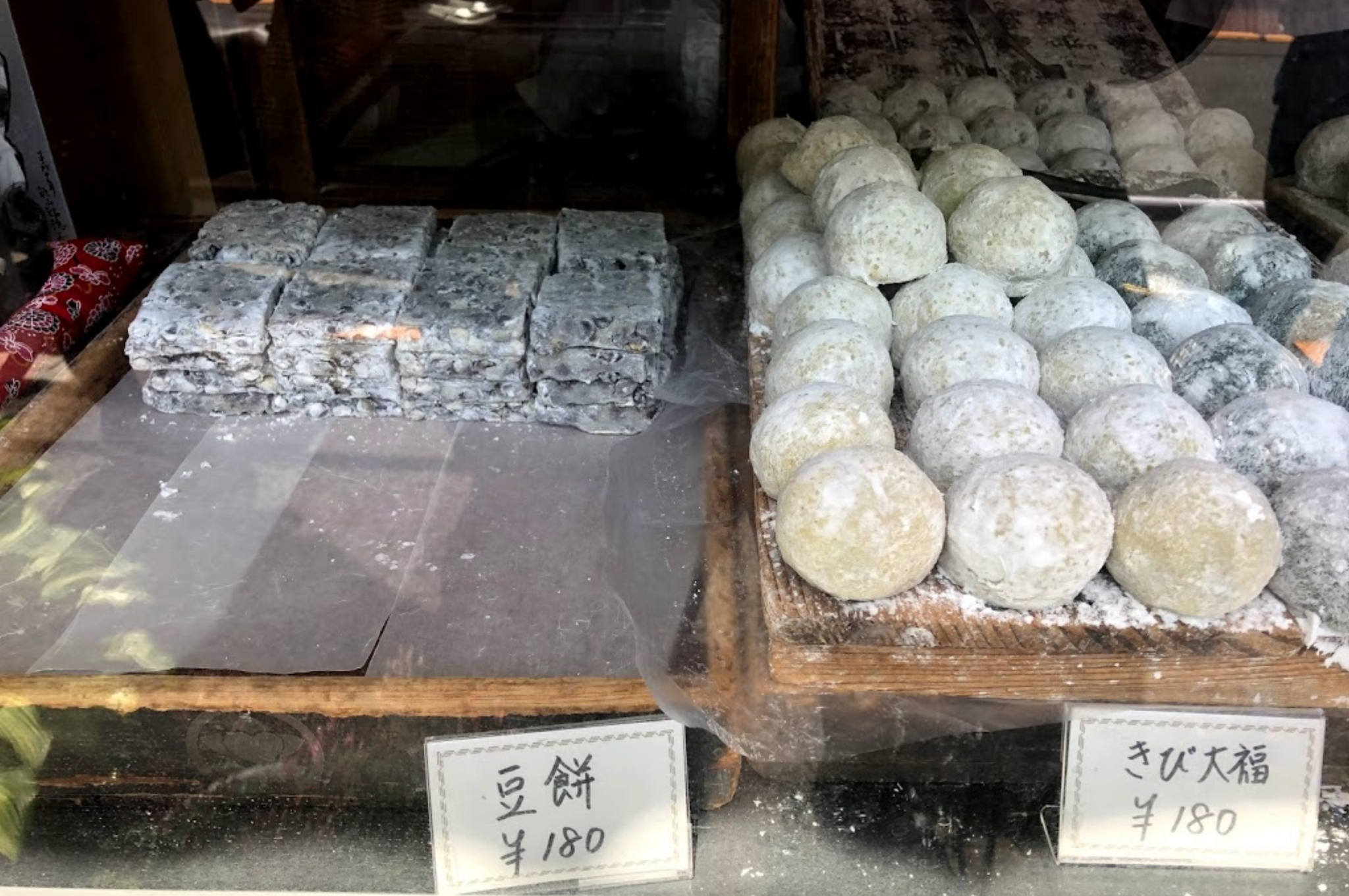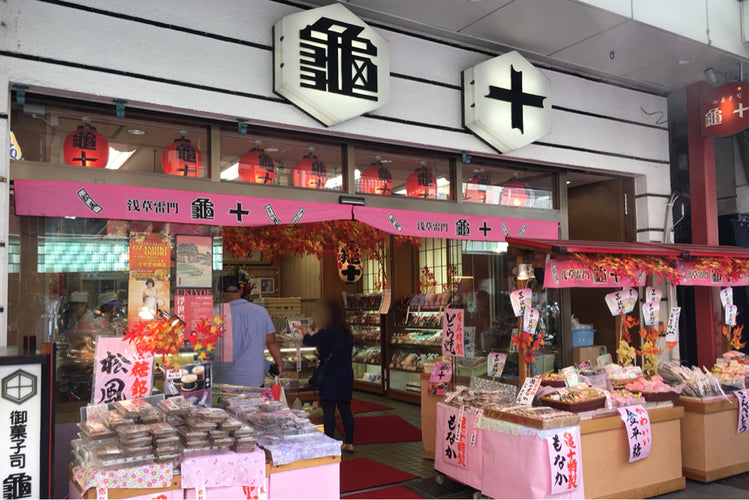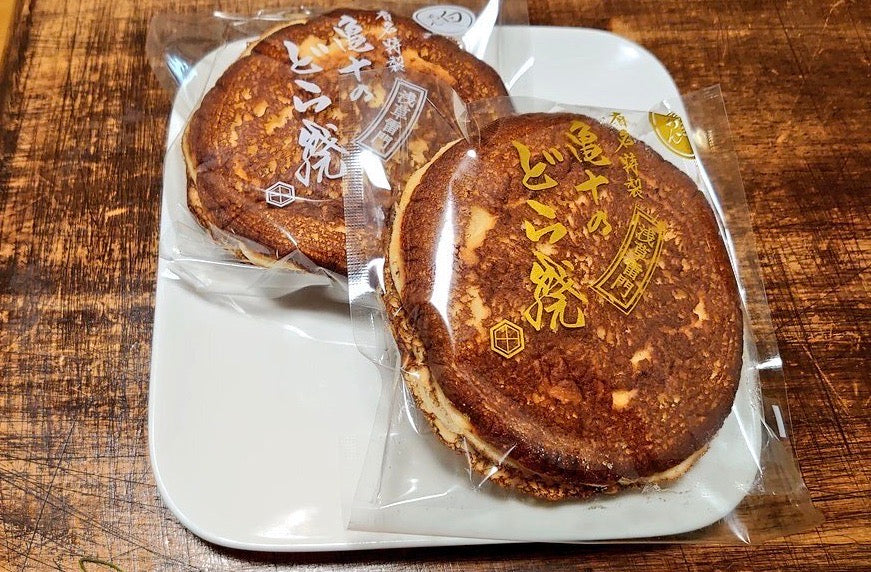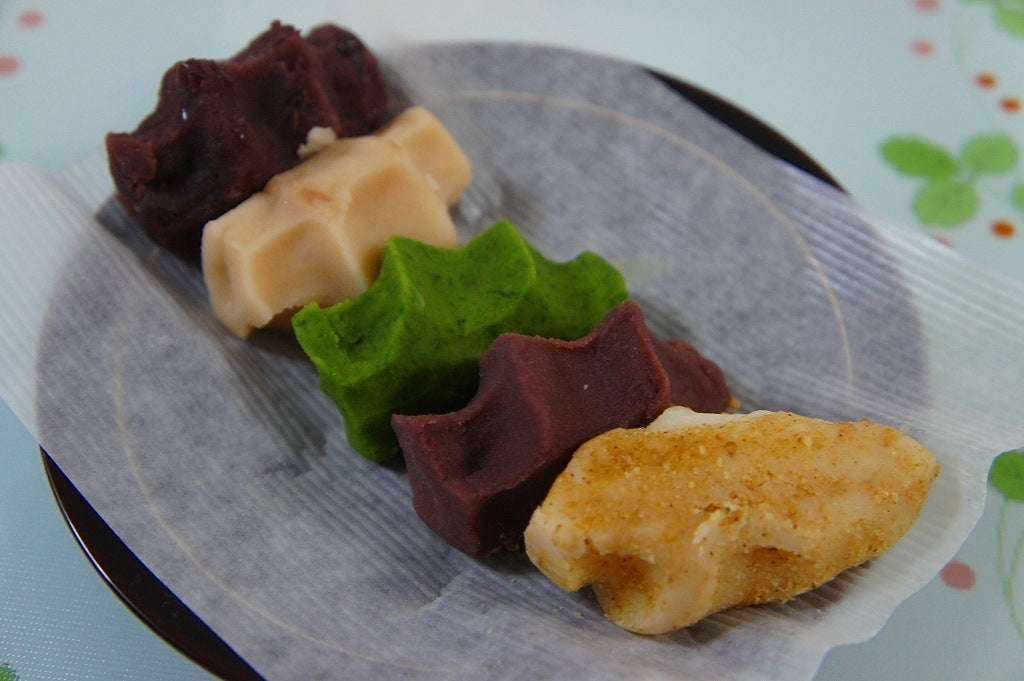What is your favourite sweets during snack time? How does it taste? There is always a perfect match for one kind of tea and one kind of the snack. Enjoy the teatime helps to slow down the daytime and enlighten every good moments.
In this article, we want to introduce you 5 Japanese sweet stores which all established a long time ago.
1. Matsushimaya - 東京・泉岳寺(松島屋)
 Matsushimaya - 東京・泉岳寺(松島屋)
Matsushimaya - 東京・泉岳寺(松島屋)
About 10 minutes from both Shirokane Takanawa Station and Sengakuji Station. A long-established Japanese confectionery store founded in 1918 near the Izako intersection. There are three popular types of Daifuku: beans, grass, and Kibi. It is often sold out in the morning, so even one must be reserved.

During this autumn time, the most popular item is the steamed chestnut yokan, which is sold every year from mid-September, is packed with fruits, and the bean paste also has a chestnut flavour. The reservation starts in mid Autumn every year and ends in the end of October. Reserve early then you will not miss it.

The most popular is Mame Daifuku. Even though it is thin, the taste and texture of the mochi is strong when chewed, and there is plenty of bean paste inside! The color is light and the sweetness is modest. Red peas steamed without boiling are soft and do not lump in the mouth. The strong saltiness deepens the sweetness of the bean paste, making it a good salted plum. Kusa Daifuku is accented with the bitterness of wormwood, giving it a mature finish. Kibi Daifuku doesn't feel as bubble wrap as it looks, but it has a simple yet sweet taste due to the double effect of Kibi mochi and red bean paste.
2. 出町ふたばの豆餅(京都・出町柳) - Demachi Futaba
 Founded in 1883, Demachi Futaba, a popular Japanese sweets shop with a continuous line of Imadegawa, Kyoto. The location is about a 5-minute walk from Keihan Demachiyanagi Station. It is located in an area that retains the good atmosphere of downtown Kyoto.
Founded in 1883, Demachi Futaba, a popular Japanese sweets shop with a continuous line of Imadegawa, Kyoto. The location is about a 5-minute walk from Keihan Demachiyanagi Station. It is located in an area that retains the good atmosphere of downtown Kyoto.
 This shop is mainly made with fresh sweets. Most of the customers in the procession order this famous soybean cake. As it is a namagashi , the expiration date is only on the day.
This shop is mainly made with fresh sweets. Most of the customers in the procession order this famous soybean cake. As it is a namagashi , the expiration date is only on the day.
3. 西洋菓子しろたえのレアチーズケーキ(東京・赤坂) - Western confectionery Shirotae
 |
 |
The store is in harmony with the dark brown wood and white wall which gives a classic settings. It is said that the Supreme Rare Cheesecake starts around the year 1975, which has been 35 years.
 Supreme rare cheesecake. The most popular cake in the shop. The white top is layered cheese and fresh cream to make it shine and different texture.
Supreme rare cheesecake. The most popular cake in the shop. The white top is layered cheese and fresh cream to make it shine and different texture.
4. 菊壽堂義信の高麗餅(大阪 北浜駅 ) - Yoshinobu Kikusodo

|
 |
Yoshinobu Kikusodo is a long-established Japanese sweets shop (Tenpo period Edo period, 1830) with an eat-in located about a 5-minute walk from Kitahama on the Osaka subway. Over 100 kinds of namagashi are served throughout the season.
|
|
 |
Korai Mochi is a set of 5 kinds of bean paste (Koshikan,Tsukusho,Shirofune of white azuki beans, Matcha house with matcha added to Shirokan and sesame house with sesame seeds) with the fertilizer inside.
Dried plums, and red perilla and sugar(right). A taste of season.
5. 亀十のどら焼き(東京・浅草) - Kamejuu

Kamejuu is a long-established Japanese sweets shop in Asakusa that has been around for about 90 years. Kamejuu is about a 3-minute walk from Asakusa Station on the Toei Subway.
 |
 |
Dorayaki (left). The fluffy dough is hand-baked one by one by craftsman. Dorayakii uses azuki beans from Tokachi, Hokkaido, and has a fluffy rounded tsubukan with moderately chewy beans. A large cloth wraps around both sides. "Kamejuu" is the only soft dough that contains air and has a non-uniform baking colour. Although it is a Japanese sweet, it has a gentle texture like chiffon cake, and the dough melts smoothly in your mouth.
Chestnut monaka(right)
Some pictures are downloaded from https://tabelog.com




